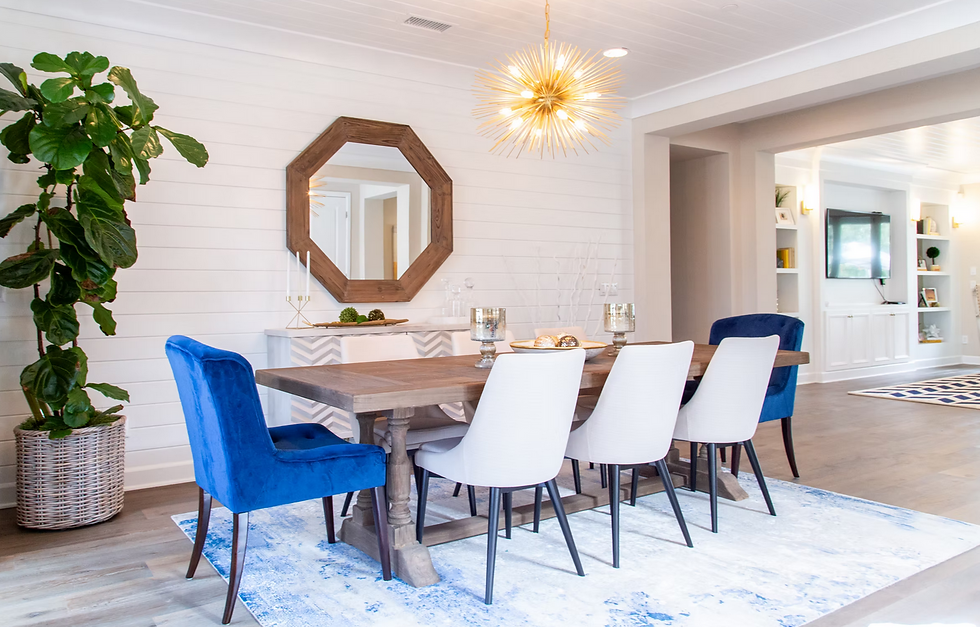Understanding and Having A Clear Vision For Your Interior Design Project
- Vision Interiors
- Oct 26, 2021
- 3 min read

If you're looking to work with an expert on a home project, such as an architect, landscape designer or interior decorator, communicating your preferences clearly and concisely can help your designer understand exactly what you want.
You can gather inspiration and assess your preferences to ensure you have the right outfit to meet with your designer.
It's a good idea to take photos and ideas of your favorite things when meeting with interior designers. But have you ever considered making a list or a list of what you don't like? These dislikes, perhaps surprisingly, can also be crucial.
Try to get Visual
Interior designers are primarily visual. It makes sense therefore that images can be the most effective way to convey your thoughts and feelings.
This makes things simple and clear. For example, if your designer envisions southwestern desert design with lots of natural wood and vibrant textiles but you see it as southwestern, conflict is likely.
Your design expert and you can quickly get on the same page if you point at a photo and say, "I really like this" or "I don't really like this look." .
Include images that directly relate to your job
Collecting images of jobs you like and disliking is a great place to begin. Photographs of landscapes are a great way to start if you're working with a landscape architect or landscape designer.
Our interior designer recommends that you search for photos of exteriors and whole-house design before you hire an architect to remodel your home or build a custom-built house. Start looking for kitchen photos if you're redesigning your kitchen. We believe you see the picture.
But, you can also include some less-on-topic photos
You don't have to include images that aren't directly related to your occupation, but they can still be a great example of how you love or hate a certain way.
Images of lifestyle, food, and garden can provide a great example of color palettes. They can give your designer a better understanding about your personality than job photos.
Practice Being Picky
You have the opportunity to choose as many photos as you like when you first begin to fill those idea books. It's great! It's time to be picky. Focus on reducing each list to the 10-20 best examples.
This will give your designer a greater number of images to look at and will also allow you to practice making design-related decisions. It will be easier to discuss your preferences and likes if you have more design skills.
Try to Get Specific
It is useful to be able to point at an image that you love or loathe, but it can lead to confusion and miscommunications if you don’t clearly describe what you want or don’t like about the space.
While you might be thinking about color palettes, your interior designer may be more focused on furniture design. A note should be added to each photograph in your idea book explaining what the space is made of.
Take the following checklists and use them as a guide to help you decide how many to include in your list.
The Things You Love Checklist:
Favorite color/colorsColor palette or combination that appeals to yourFurniture that you adore
If you're looking at architecture, you want a room that exudes a certain feeling.
The NOT FOR ME Checklist
You are allergic to certain colors or shades of color. You deserve a big pat on your back if you've made it this far.
It can be difficult to define your style. But, it doesn't mean you have to. Your design professional will usually be able to guide you through the entire process. Your designer and you will have a better working relationship if you put more effort into the design.
If you are having trouble identifying your personality after going through the exercises, you might want to look laterally at what shops, restaurants or brands you can find that reflect your love and hate.
This can add a lot of style information to your portfolio, provided that the designer knows about the locations you've chosen.
Remember that it is important to communicate your preferences to your interior designer. However, once you have done this, it is equally important to take a step back and allow your interior designer to come up with creative ideas.
All the things you love will be there. You might not love them all, but you can always find a way to make it your home. You may be surprised at how much you enjoy something because of the creative vision of an interior designer.




Comments